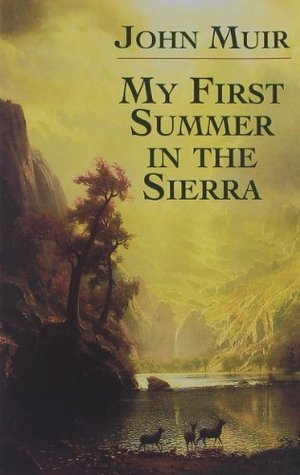What do you think?
Rate this book


160 pages, Paperback
First published January 1, 1911





Here I could stay tethered forever with just bread and water, nor would I be lonely; loved friends and neighbors, as love for everything increased, would seem all the nearer however many the miles and mountains between us.
Another glorious Sierra day in which one seems to be dissolved and absorbed and sent pulsing onward we know not where. Life seems neither long nor short, and we take no more heed to save time or make haste than do the trees and stars. This is true freedom, a good practical sort of immortality.
Having escaped restraint, they were, like some people we know of, afraid of their freedom, did not know what to do with it, and seemed glad to get back into the old familiar bondage.
The deeper the solitude the less the sense of loneliness, and the nearer our friends.
I took off my shoes and stockings and worked my way cautiously down alongside the rushing flood, keeping my feet and hands pressed firmly on the polished rock. the booming, roaring water, rushing past close to my head, was very exciting. I had expected that the sloping apron would terminate with the perpendicular wall of the valley, and that from the foot of it, where it is less steeply inclined, I should be able to lean far enough out to see the forms and behavior of the fall all the way down to the bottom. But I found that there was yet another small brow over which I could not see, and which appeared to be too steep for mortal feet. Scanning it keenly, I discovered a narrow shelf about three inches wide on the very brink, just wide enough for a rest for one's heels. But there seemed to be no way of reaching it over so steep a brow. At length, after careful scrutiny of the surface, I gound an irregular edge of a flake of the rock some distance back from the margin of the torrent. If I was to get down to the brink at all that rough edge, which might offer slight finger holds, was the only way. But the slope beside it looked dangerously smooth and steep, and the swift roaring flood beneath, overhead, and beside me was very nerve-trying. I therefore concluded not to venture farther, but did nevertheless. Tufts of artemisia were growing in clefts of the rock near by, and I filled my mouth with the bitter leaves, hoping they might help to prevent giddiness. Then, with a caution not known in ordinary circumstances, I crept down safely to the little ledge, got my heels well planted on it, then shuffled in a horizontal direction twenty or thirty feet until close to the outplunging current, which, by the time it had descended thus far, was already white. Here I obtained a perfectly free view down into the heart of the snowy, chanting throng of comet-like streamers, into which the body of the fall soon separates.